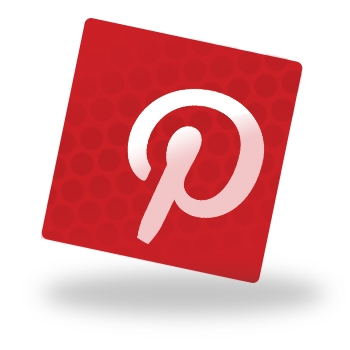Pinterest is one of the most underutilized and undervalued social media sites available. If a business is able to harness the power of Pinterest, it can significantly increase its brand recognition, customer loyalty and overall sales.
Here are five ways to make Pinterest work for your business.
1. Display your wares
This may seem obvious, but it’s worth exploring in more detail. Pinterest is an image-sharing social media site, ideal for people who want to display or discover photographs, drawings, paintings and any other visual content. It is strongly associated with food, arts and crafts, but the website is hardly limited to these topics. Really, any visual imagery has the potential to stand out and gain attention on Pinterest.
This makes Pinterest ideal for retailers of all kinds. No matter what you’re selling, you can display your offerings in an attractive, appealing manner on Pinterest. This will give you the opportunity to catch the attention of consumers who are specifically looking for aesthetically pleasing examples of clothing, drinks, cars, furniture, home goods and much more. Users are already primed to engage with products, and so will be more responsive to your efforts here than on other social media channels.
As Top Tech News reported, studies have shown that Pinterest users tend to spend more on their shopping when they reach a retailer’s website through Pinterest. Data analytics firm RichRelevance found that Pinterest users’ average orders in these cases total $199.16. For Facebook and Twitter, average order values stand at only $92.27 and $58.02, respectively.
By creating and maintaining an appealing, targeted Pinterest presence, your business can potentially significantly improve its bottom line.
2. Follow best practices to attract followers
Of course, for your company to reap these benefits, you need to gain a lot of exposure. And the key to reaching out to as many Pinterest users as possible is by gaining followers. To achieve this goal, you need to follow best practices.
A recent study from the University of Minnesota shed some light as to how the most popular accounts attract followers on Pinterest. The researchers collected information on more than 45,000 users and over 3 million pins, and ultimately identified the three most important factors for gaining followers. The single most critical step you can take, the study revealed, is simply to follow others. The more users that an account followed, the more followers it was likely to have. Secondly, follower count was closely tied to the number of pins on a given account. Similarly, a large number of boards was an important factor. One final best practice, according to the University of Minnesota study, is a relatively broad focus when it comes to topics. Users that focus only a select few subjects will struggle to expand their appeal across the wider Pinterest community.
As this analysis demonstrated, maintaining an effective Pinterest account requires more than simply uploading appealing pictures. That is a big part of it, yes, but you also need to follow others and ensure that your focus is broad enough to find a sizable audience. Only by following these best practices can you ensure that your Pinterest presence does as much good for your company as possible.
3. Learn about your audience
Among the biggest benefits you can reap if you manage to increase your follower count is that you’ll have the opportunity to learn a tremendous amount of useful insight about your target audience.
Speaking to Business News Daily, Danny Maloney, CEO and co-founder of a Pinterest analytics and management firm, emphasized this advantage. He suggested that by looking closely at the interests of your business’ followers, you can identify trends that are relevant and growing among your potential and existing consumers. Determine what type of content they are repinning, how they are treating your content and other relevant actions. With this information in hand, you will be better able to develop Pinterest content, and overall marketing strategies, that are more appealing to your ideal demographics.
Going even further, this information can even exert an influence on your product development and service offering strategies. By examining these individuals and their Pinterest and other online habits, you may discover new, untapped niches in your market that your company has the potential to fill.
Ultimately, you should consider your followers not just as potential customers, but also as sources of invaluable research.
4. Encourage users to create wish lists
A relatively recent trend among Pinterest users is the creation of wish list boards, Business News Daily noted. These wish lists are designed to help friends and family pick gifts for birthdays, holidays, bridal showers, baby showers and other special events. Essentially, they are act like a more casual registry.
Speaking to the news source, Kirsten Knipp, vice president of product marketing and brand for an eCommerce platform, argued that businesses can take advantage of this trend by encouraging followers to develop their own wish lists that tie into the organization’s offerings.
“Pinning can work really well as a secondary call to action for someone who is browsing and not ready to hit buy just yet,” Knipp told the news source. “The customer gets to share what they really want, and when [a family member or friend] goes to buy it, one click brings them right back to you.”
This is a particularly viable strategy because people inherently enjoy creating wish lists, and if they are following you on Pinterest, they must be at least somewhat interested in your products. Combining these two factors into a single strategy is a surefire way to increase both exposure and sales.
5. Create narratives
Another key way for businesses to really make Pinterest work for them is by using their boards to create engaging narratives, as entrepreneur and business consultant Nate Ginsburg recently explained. He noted that telling stories through this medium can be a way of delivering a softer sell to followers, which may prove just as powerful or even more effective than sponsored Product Pins. After all, for all its consumerist leanings, most people don’t visit Pinterest with the primary goal of evaluating products and making a purchase. They want to be amused, entertained and informed by imagery. The more direct efforts to encourage purchases aren’t necessarily going to backfire, but they also won’t win as many fans as less coercive tactics.
Storytelling is especially worthwhile because it is, by its nature, engaging. Everyone loves a good story, and they’ll be far more likely to interact with your brand if they feel invested in what you’re producing.
For example, say you are an electronics retailer. Obviously, your Pinterest account should feature plenty of pictures of your various gadgets and devices. But instead of displaying these products randomly, consider creating a narrative, such as the creation of the ideal home entertainment center. Your Pinterest account can document the step-by-step process from a consumer’s point of view – choosing the right products, taking them home, installing them and enjoying the experience. This sequence will be a lot more appealing to many of your followers than an uncurated collection of speakers.
Is your company on Pinterest? How has the channel worked for marketing your business?
- 5 Reasons Why Cloud Solutions are Essential for Small Business - February 4, 2024
- How to Migrate Your Business to the Cloud in 7 Steps - June 16, 2021
- How Beacon Technology is Revolutionizing Business and Marketing - March 18, 2021




